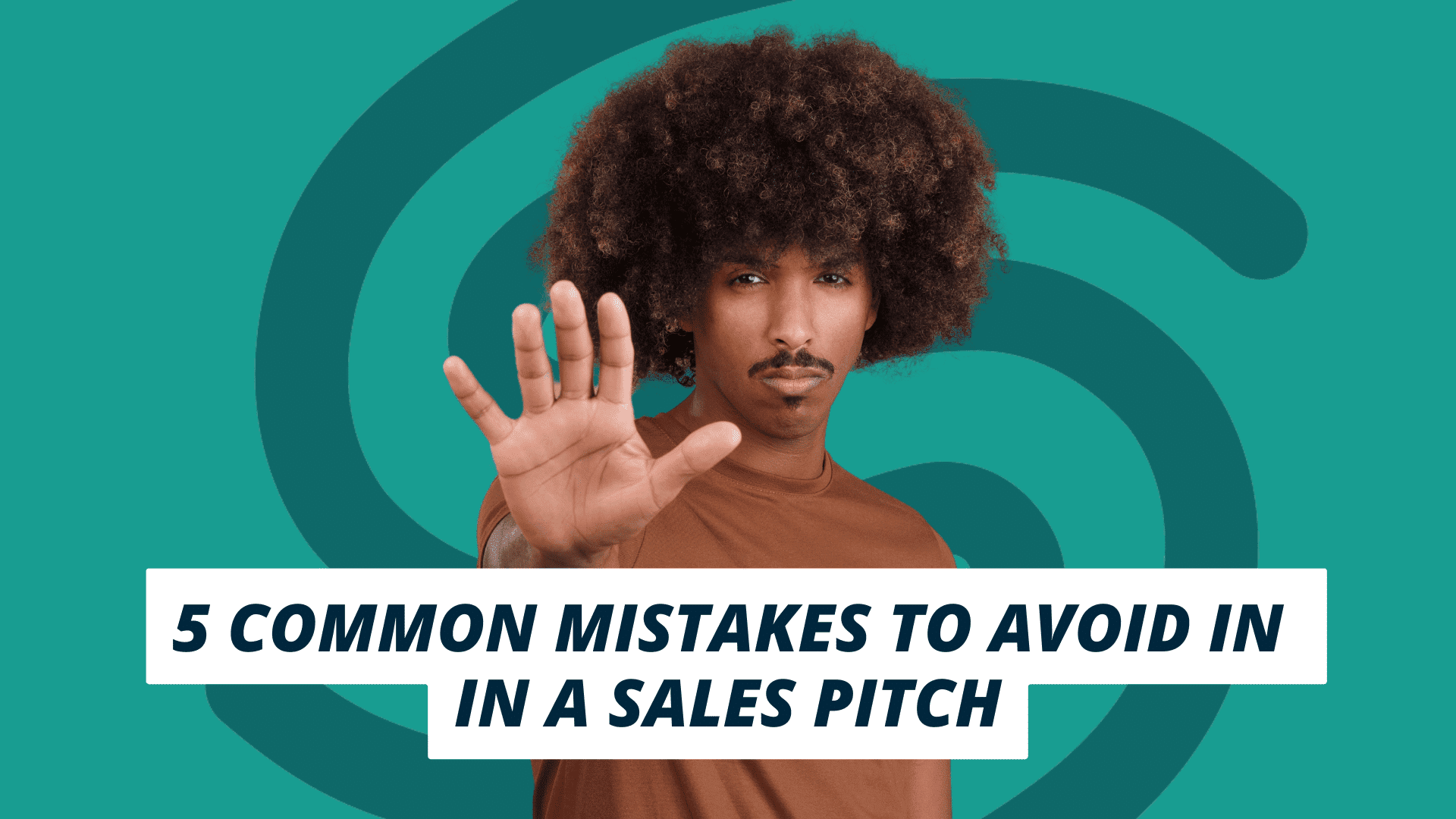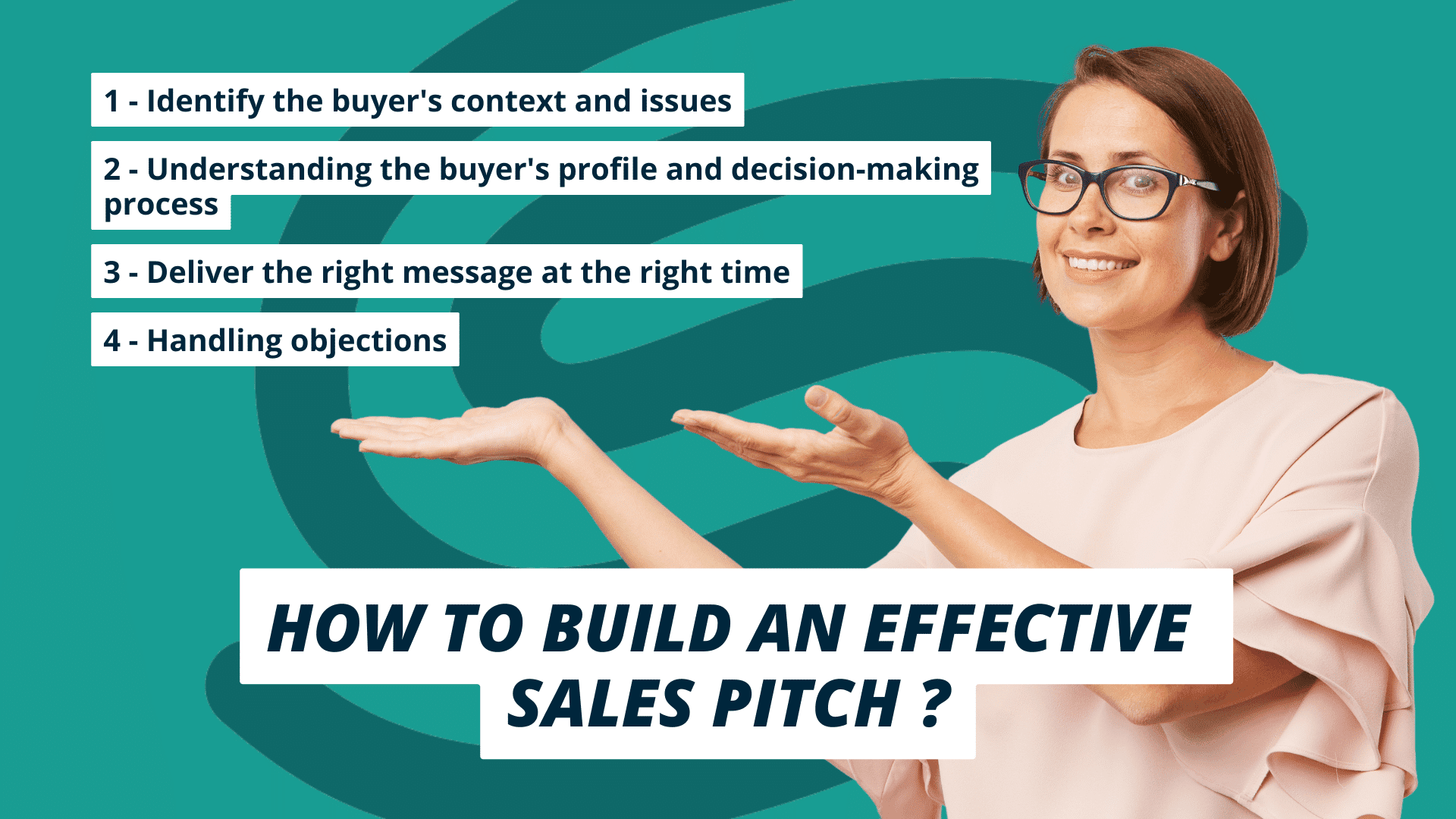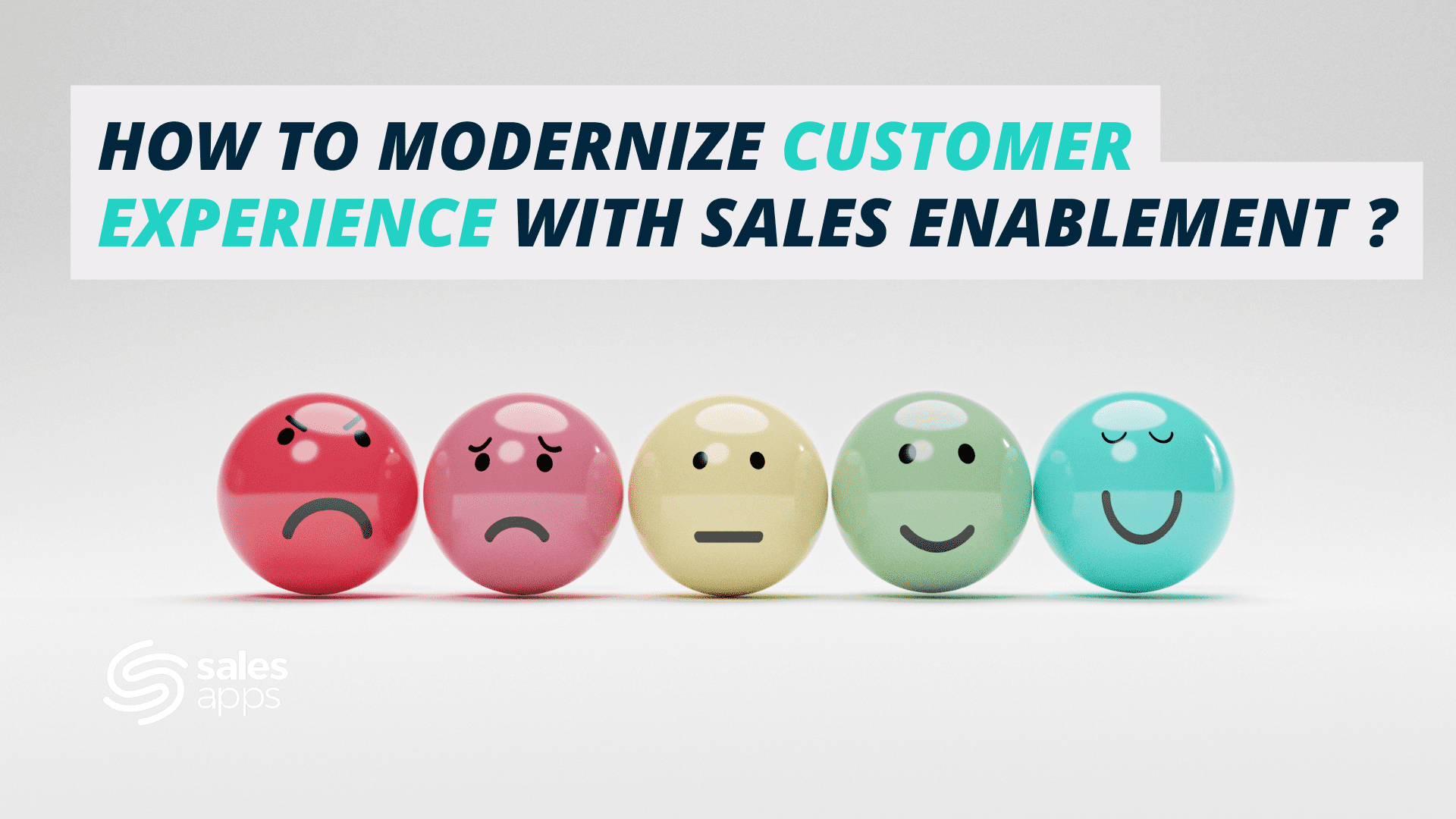
Blog

What makes a good sales pitch?

An effective sales pitch responds to the buyer's needs and creates the desire to buy the product/service being marketed. To be successful, the sales pitch must meet certain criteria:
1. Identifies the buyer's context and challenges
A good sales pitch includes a certain number of questions to help understand the buyer's context and the issues at stake. In this way, the salesperson can be relevant in his or her sales approach and facilitate the buyer's projection into the act of buying.
2. It facilitates a customized approach based on the buyer's profile and organization.
An effective sales pitch is personalized, and involves a stage of information gathering prior to the appointment. This preparatory work on the buyer's profile and organization will make it easier for sales reps to personalize their approach during meetings.
3. The salesperson can easily appropriate it
A sales pitch needs to be clear and well-structured, so that the salesperson can master it and enrich his or her speech naturally. The ease with which the sales assistant adopts the sales pitch contributes to fluid communication and a convincing sales presentation.
4. It provides a solution to the buyer's problem
The salesperson's sales pitch must be built around the buyer's problem in order to engage him/her in the argument, captivate him/her and then lead him/her towards an informed purchasing decision.
5 common mistakes to avoid in a sales pitch

1. Deliver your pitch in monologue mode
A sale is above all an exchange between two people: the buyer and the sales rep. Imagine what the meeting would be like if the sales rep imposed his pitch without taking the time to take an interest in the buyer and ask him questions. Chances are, the sale will fail!
2. Failing to anticipate and prepare responses to buyer objections
Not knowing how to respond to the buyer's objections can discredit the salesperson's approach and jeopardize all the argumentation work done so far. By anticipating the buyer's objections and answering them with conviction, the salesperson can give greater impact to his or her sales pitch and increase the chances of closing the sale.
3. Argument for argument's sake
When it comes to sales, quantity does not equal quality, and an inappropriate quantity of arguments often results in a loss of attention. One thing to avoid in any sales pitch is recitation or enumeration! Stating all your prepared arguments in a row without any logic is never a good thing in a sales negotiation. For an argument to be meaningful to the buyer, it must be chosen according to the context of the exchange, and delivered at the right time, depending on the meeting situation.
4. Stick to technical or functional arguments
Le maitre mot est d’adapter son discours commercial en fonction de son interlocuteur, il en est donc de même pour le choix des arguments qui seront utilisés et leur nature. Les arguments d’ordre technique seront utilisés avec parcimonie et pour rassurer un acheteur la plupart du temps, sauf dans le cas d’un acheteur technique où ils devront être plus largement utilisés. Dans tous les cas, les arguments de types techniques et/ou fonctionnels ne devront pas être utilisés seuls mais associés à d’autres types d’arguments (personnalisés par rapport à un usage, témoignages/références, angle financier…).
5. Stop at the sales pitch
Don't limit yourself to simply presenting thesales pitch, but rather enrich it by illustrating your points with concrete examples (e.g.: the introduction of a "Best sellers" label on our flagship product range enabled us to increase sales by 3%). The use of concrete examples provides a context for your argumentation and reinforces the buyer's confidence in the sales pitch used. They can then better project themselves and understand the subject at hand.
How do you build an effective sales pitch?

1. Identify the buyer's context and issues
This stage consists in determining whether the buyer corresponds to your ideal customer target, and whether he or she is likely to become a new one. To find this out, you need to question them to understand their issues and define their potential purchasing context (type of use, number of people...). Qualifying these issues has other advantages, not least the fact of not wasting time with non-target contacts, and enabling the sales rep to know whether it's appropriate to move further ahead in the sales cycle.
2. Understanding the buyer's profile and decision-making process
During the sales pitch, the salesperson will need to focus on the buyer's profile and what will trigger the sale: What makes the buyer choose one product over another? Do they already have an in-house solution? What motivates them to buy? Is he the decision-maker? Who are the stakeholders involved and the final decision-makers? Is the decision made in France, or at headquarters abroad? All these questions are essential, as they will enable you to develop your sales pitch logically.
3. Deliver the right message at the right time
The day of the meeting with the buyer has arrived! All the conditions are in place for a successful sale, but the salesperson is struggling to be effective in his or her argumentation. Here are a few tips that can help:
- Don't stop at simply presenting the sales pitch, but give it strength with concrete examples.
- Avoid arguing too quickly, and give the buyer time to process the information that has been shared with him.
- Make the sales pitch your own, and pass it on naturally to the buyer. Stay true to yourself and avoid repeating the script as it is.
- As the exchange progresses, the salesperson will be able to identify the right moment to put forward his or her arguments, thanks to active listening.
4. Handling objections
There are no good or bad objections. They reflect the fact that the buyer is engaged in the decision-making process and is trying to project himself with the solution. The idea is to understand where the objection comes from and make sure it's clearly understood. The salesperson can then develop his or her additional argumentation and check whether the objection has been resolved with the buyer.
The different methods for a successful sales pitch

1. The CAB method
The CAB method is a sales technique that helps structure the salesperson's discourse to give him or her greater impact in arguing with the buyer. The CAB acronym is broken down into 3 elements:
Characteristics: These concern all the intrinsic attributes of the product. It's a kind of rational way of talking about the product/service.
ex = The Salesapps application works in 100% Offline mode.
Advantages: Advantages represent the positive points that features bring to the product. This step also highlights why your offer is better than the competition's.
ex = Salesapps' 100% Offline operation guarantees the salesperson up-to-date content, accessible whatever the conditions of the appointment.
Benefits: They represent the real reason why the buyer decides to buy a product/service. It can be summed up by the following question: what will the product actually do for the buyer that will change his or her life?
ex = The Salesapps application puts the salesperson in the right conditions for a successful meeting.
2. The SONCASE method
The SONCASE method uses the buyer's dominant psychological traits to determine his or her buying motivations. This method provides the salesperson with valuable information on the psychology of the buyer and his or her environment, enabling him or her to develop the right sales pitch during meetings.
There are 7 psychological traits:
| Security | This type of buyer fears risk and needs reassurance. |
| Pride | This type of buyer wants to stand out and be better than the rest. |
| New | This type of buyer is fond of novelty and is not afraid of change. |
| Comfort | The type of buyer who doesn't like to leave his comfort zone. |
| Silver | This type of buyer is interested in price and will seek to reduce costs. |
| Sympathy | This type of buyer is open to dialogue and needs to feel confident. |
| Ecology | This type of buyer is a committed and vigilant consumer. |
Sales Enablement to reinforce the sales pitch

When it comes to helping salespeople improve their sales pitch, Sales Enablement is undoubtedly the best tool for the sales force.
1. Contextualized sales approaches to support the salesperson's sales pitch
The Sales Enablement application is designed to follow the flow of the appointment. Because content is integrated into intuitive sales paths, sales reps are better equipped to contextualize their approach. As a result, they can personalize their sales pitch, be more persuasive and sell more in appointments.
2. Content formats to stimulate exchange and create an immersive sales experience
The variety of embedded content (document, image, video, 3D realization...) in the application reinforces the animation of the salesperson's discourse, offering the buyer an interactive and immersive sales experience. In this way, the salesperson can create a bond, engage and hold the buyer's attention, reinforcing his or her ability to convey the right arguments at the right time to influence the sale positively.
3. An image-driven interface that facilitates up-selling and cross-selling.
Le storytelling est un excellent moyen pour captiver l’acheteur autour de l’argumentaire de vente du commercial. Les contenus marketing mis à sa disposition lui permettent de sublimer son discours en présentant visuellement son entreprise et son offre de manière personnalisée à chaque acheteur. Le commercial peut ainsi créer une écoute active chez son interlocuteur, ce qui renforce la compréhension de son argumentaire de vente. La fonctionnalité « documents liés » offrira par ailleurs au commercial la possibilité de rebondir facilement lors de son échange avec l’acheteur pour développer son approche de cross-selling ou de l’up-selling. Il sera alors plus convaincant pour appuyer ses propos ou contre argumenter des objections.
4. Training: functionalities to quickly master sales pitches in an appointment situation
The Salesapps "Training" feature enables salespeople to put themselves in the right situation, learn the right pitches and master the right arguments, so they can use them at the right moment during the meeting. The salesperson uses the right argument at the right time, and is able to steer the sale in the desired direction.
5. Training: Quizzes to evaluate and challenge your knowledge in a fun and ongoing way
The "Quiz" learning format makes it possible to create training paths and accelerate the skills development of new recruits, as well as of all sales reps staff during product or service launches. This fun, comprehensive training approach enables the sales force's knowledge to be continuously tested and reinforced on a variety of themes (product/customer knowledge, promotional positioning/operation, merchandising, customer presentation, etc.). The salesperson is confident in what he or she is saying, and is able to respond quickly to the buyer's questions.
FAQ
What's a sales pitch?
The sales pitch is the salesperson's sales pitch. It encompasses all the arguments needed to guide a buyer towards a purchasing decision. A good sales pitch helps to understand the buyer's issues, makes it easier to personalize the approach according to the buyer and his organization, provides solutions to the buyer's problems and helps him to project himself in his decision-making process.
How do you write a sales pitch?
In terms of the methods used, SONCASE and CAB remain the most common for writing an effective sales pitch. The salesperson can also use the QQOQPC method to discover the buyer's needs and expectations. Once written, the sales pitch can be uploaded to Sales Enablement's sales solution, so that the sales force can practice and get to grips with the right pitch before entering the negotiation phase with the buyer.
How do you write a quality sales pitch?
There are 4 key steps to writing a sales pitch, the first of which is to qualify the buyer's problem. The second step is to understand the buyer's typical profile and decision-making process. Finally, you need to know how to deliver the right sales pitch at the right time, and how to deal with the buyer's objections.
How do you present a sales pitch?
Beyond the structure of thesales pitch, Sales Enablement's application is an innovative solution offering features to help you quickly master sales pitches in an appointment situation, an interface that proves through images, different content formats and contextualized sales approaches to hit the bull's eye with the buyer.
What are the most common mistakes in a sales pitch?
Use a sales monologue, don't anticipate the buyer's objections or ask questions during the meeting, argue in all directions and stick to technical/functional arguments and don't give concrete examples to complete the sales pitch.



